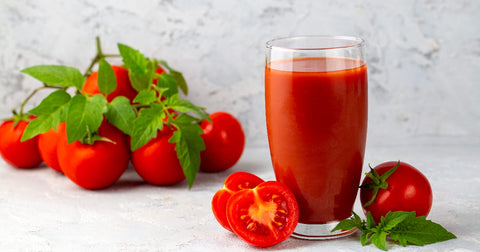If you’ve ever found yourself confused in the spice aisle or while reading a recipe that calls for coriander or cilantro, you’re not alone. While both come from the same plant, these two ingredients are used in very different ways and can offer unique health benefits.

In this article, we’ll explore coriander vs cilantro in detail what they are, how they’re used, their nutritional value, and why some people love one but dislike the other. We'll also discuss coriander benefits, the benefits of cilantro, and when a food intolerance might make either ingredient a poor fit for your digestive system. If you're asking, is coriander the same as cilantro?, let’s settle the debate once and for all.
What Is Cilantro?
Cilantro refers to the bright green leaves and stems of the Coriandrum sativum plant. In the U.S. and Canada, the word “cilantro” is used to distinguish the fresh leafy part from the seeds. In other parts of the world, particularly the U.K. and Europe, these same leaves may be referred to as “fresh coriander.”
Common culinary uses:
-
Topping for tacos, soups, and curries
-
Ingredient in salsas, chutneys, and guacamole
-
Added fresh to dishes at the end of cooking for flavor
Cilantro has a distinctive, citrusy, sometimes soapy taste that is loved by many but disliked by others due to a genetic variant that affects smell and taste perception.
What Is Coriander?
So what is coriander if it’s not the leafy green part?
Coriander refers to the seeds of the same plant. Once the cilantro plant flowers and goes to seed, those seeds are harvested and dried. They are sold whole or ground and used as a warm, nutty spice in many global cuisines.
Common culinary uses:

-
Ground into curries, spice rubs, and marinades
-
Used whole in pickling or Indian dishes
-
Key ingredient in garam masala and other spice blends
So, is coriander the same as cilantro? Technically, yes they come from the same plant. But in cooking and nutrition, they refer to two different parts with distinct uses and benefits.
Coriander Benefits: Why These Seeds Matter
Coriander seeds pack a powerful punch when it comes to health benefits. Here are some of the top scientifically backed advantages:
-
Digestive support: Coriander seeds may help stimulate digestive enzymes and reduce bloating.
-
Blood sugar regulation: Some studies suggest that coriander may help lower blood glucose levels.
-
Anti-inflammatory properties: Coriander's natural compounds may support joint and gut health.
-
Rich in minerals: Including magnesium, iron, and calcium for bone and heart health.
Benefits of Cilantro: Fresh and Full of Flavor
Cilantro is more than just a garnish. Its leaves are packed with antioxidants and essential nutrients that make it a smart addition to your meals.
Top benefits of cilantro include:
-
Natural detoxification: Cilantro may help the body remove heavy metals and environmental toxins.
-
Antimicrobial properties: It has shown some ability to fight certain pathogens.
-
Supports skin health: With vitamin A and antioxidants, cilantro may help reduce skin inflammation.
-
Low-calorie flavor booster: Adds depth and brightness without calories or fat.
If you enjoy the taste of cilantro and tolerate it well, it can be a nutritious and refreshing part of your diet.
Could You Be Sensitive to Coriander or Cilantro?

Even healthy herbs can cause issues for certain people. If you notice bloating, fatigue, or digestive discomfort after meals that include these ingredients, you may be experiencing a food intolerance.
A food intolerance is not the same as an allergy it’s often a delayed reaction triggered by difficulty digesting certain proteins or compounds in food.
Some common signs of intolerance to coriander or cilantro may include:
-
Bloating or gas
-
Abdominal pain or cramping
-
Headaches
-
Fatigue or brain fog
-
Nausea or skin breakouts
The best way to find out? A food sensitivity test kit can help you determine if your immune system is reacting to coriander, cilantro, or other foods in your diet.
How to Use Coriander and Cilantro Safely
If you’re new to these herbs or concerned about intolerance, here’s how to add them into your diet gradually:
-
Start with small amounts and monitor for any symptoms
-
Choose organic options when possible to reduce pesticide exposure
-
Use coriander seeds in teas or spice blends to help with digestion
-
Add fresh cilantro at the end of cooking to preserve its nutrients
If you feel fine after consuming them, you're likely not intolerant. If you feel off, take the next step with a food sensitivity test kit to pinpoint the cause.
Final Thoughts: Coriander vs Cilantro Which Is Right for You?

When it comes to coriander vs cilantro, the real winner depends on your palate, health goals, and personal tolerance.
-
Cilantro is vibrant, fresh, and detoxifying
-
Coriander seeds are warming, gut-friendly, and rich in minerals
Both have their place in a healthy diet but they’re not for everyone. If you're experiencing unexplained digestive issues or suspect that herbs may be playing a role, consider testing your response with a food sensitivity test kit to eliminate the guesswork.
Frequently Asked Questions (FAQs)
1. Is coriander the same as cilantro?
No. They come from the same plant, but coriander refers to the seeds, while cilantro refers to the fresh leaves and stems.
2. What is coriander used for?
Coriander seeds are used as a spice in many cuisines. They support digestion and add a warm, nutty flavor to dishes.
3. What are the benefits of cilantro?
Cilantro is rich in antioxidants and vitamins A, C, and K. It may help with detoxification, skin health, and inflammation.
4. Can you be intolerant to coriander or cilantro?
Yes. Some people may experience food intolerance symptoms like bloating or fatigue after consuming these herbs.
5. How do I know if I'm sensitive to cilantro or coriander?
A food sensitivity test kit can identify whether your body reacts negatively to these ingredients.


.png?v=1737390083)
.png?v=1737187409)


